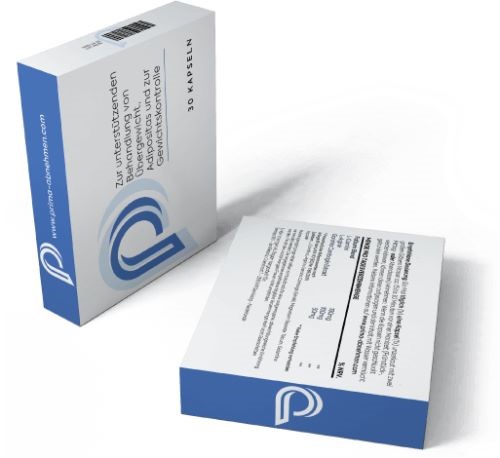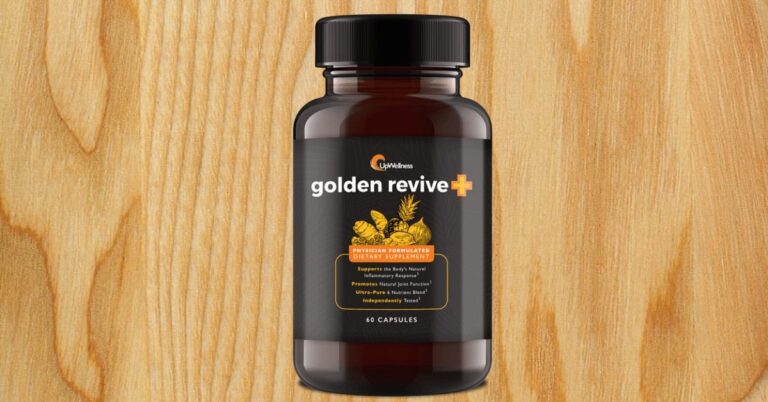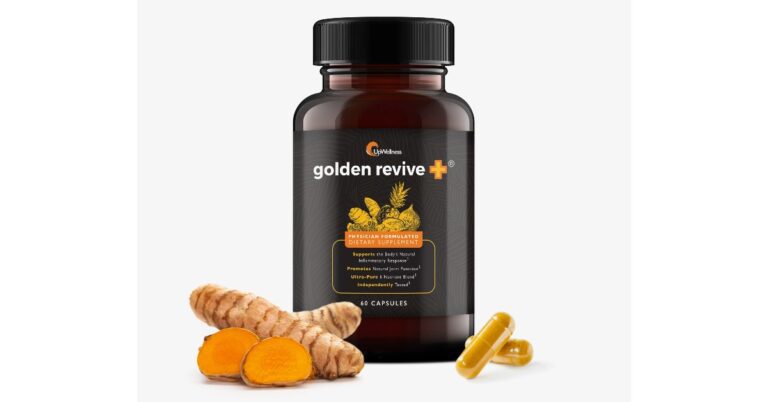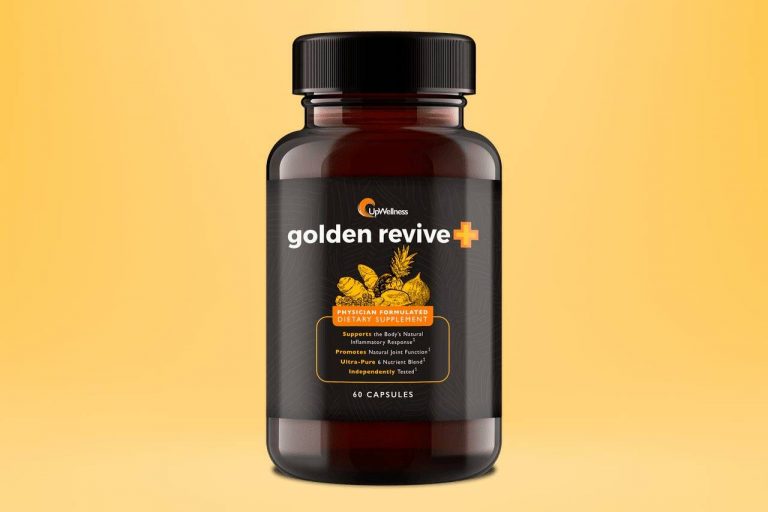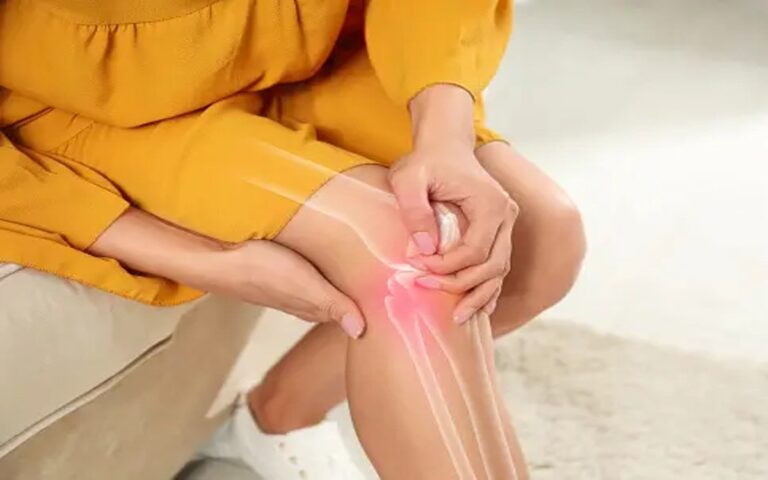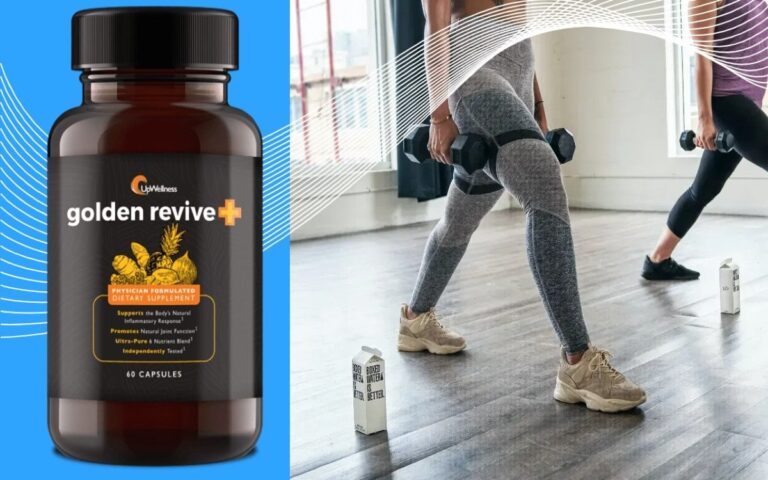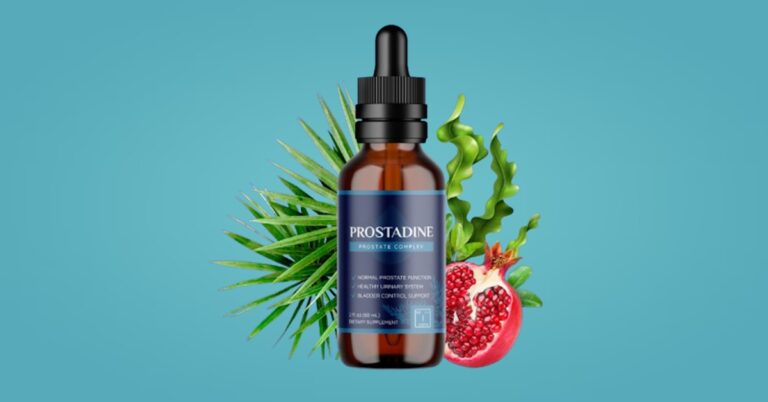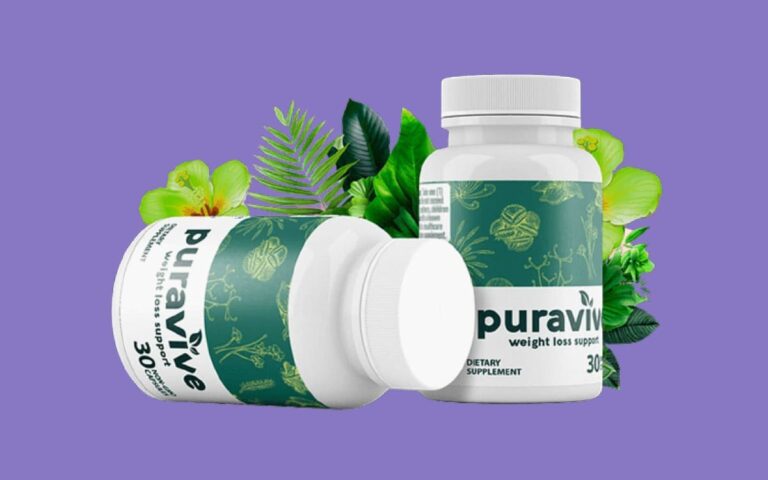The Best Fluffy Pancakes recipe you will fall in love with. Full of tips and tricks to help you make the best pancakes.

In today’s fast-paced world, finding time for exercise can be a challenge. Demands from work, family, and other commitments often leave us with little room for lengthy gym sessions.
However, what if we told you that you can significantly enhance your longevity with just 10 Minutes of Daily Exercise Can Extend Your Life?

It might sound too good to be true, but emerging research suggests that even short, intense workouts can have profound effects on our overall health and lifespan.
Importance of Physical Activity for Longevity
Physical activity has long been touted as a cornerstone of a healthy lifestyle. We’ve heard the advice: “Get moving, stay active.” But why is it so crucial, and how does it contribute to a longer life?
The answer lies in the numerous physiological benefits that exercise imparts to our bodies.
Regular exercise has been linked to improved cardiovascular health, reduced risk of chronic diseases such as diabetes and hypertension, enhanced mental well-being, and better weight management.
It promotes the efficient functioning of various bodily systems, from the heart and lungs to the muscles and joints. Moreover, it aids in the regulation of blood pressure, cholesterol levels, and blood sugar—key factors in preventing life-threatening conditions.
Key Takeaways: 10 Minutes of Daily Exercise Can Extend Your Life
- Less Than 10 Minutes of Exercise Can Extend Your Life: This article has uncovered the surprising potential of short, intense workouts, particularly High-Intensity Interval Training (HIIT), in significantly improving our health and longevity.
- Efficiency is Key: Short workouts offer an efficient alternative for individuals with busy schedules. They can be seamlessly integrated into daily routines, making consistent exercise more attainable.
- Science Supports Short Workouts: Numerous studies and research findings have demonstrated the remarkable benefits of HIIT, including improved cardiovascular health, enhanced metabolic function, and reduced stress levels.
- Customization is Crucial: Tailoring short workouts to age groups, fitness levels, and individual preferences ensures inclusivity and effectiveness.
- Incorporation into Daily Life: Whether in the morning, during breaks, or in the evening, short workouts can be integrated into various parts of the day to ensure consistency.
- Balanced Lifestyle Matters: Complementing short workouts with a balanced lifestyle, including proper nutrition, hydration, rest, and stress management techniques, is essential for overall well-being.
- Inspiring Success Stories: Real-life accounts of individuals who have experienced positive transformations serve as powerful motivators, showing that anyone can benefit from short workouts.
- Start Today for a Better Tomorrow: The transformative potential of less than 10 minutes of exercise is within reach for everyone. By taking action now, you’re investing in a longer, healthier life. Embrace the power of short workouts and embark on this journey towards optimal well-being.
Also Read: How To Heal Bone-On-Bone Joint Pain Permanently
Thesis Statement: How Less Than 10 Minutes of Exercise Can Extend Your Life
This article delves into a revolutionary concept: the potential of ultra-short workouts—lasting less than 10 minutes—to significantly impact our lifespan.
We’ll explore the scientific evidence behind this claim, dissecting the mechanisms through which brief, intense bursts of exercise confer remarkable health benefits.
Through case studies, expert opinions, and empirical data, we aim to demonstrate that it’s not the duration but the intensity and consistency of exercise that hold the key to a longer, healthier life.
Join us on this journey as we uncover the surprising truths about the impact of short workouts on longevity.
The Science Behind Short Workouts
A. Overview of High-Intensity Interval Training (HIIT)
High-intensity interval Training (HIIT) is a fitness strategy characterized by short bursts of intense, all-out effort followed by brief periods of rest or lower-intensity activity.
This form of exercise is designed to push your body to its limits in a short amount of time. Unlike traditional steady-state cardio, which requires longer durations, HIIT aims to maximize the benefits of exercise in a condensed timeframe.
The beauty of HIIT lies in its adaptability. It can be tailored to various fitness levels and preferences, making it accessible to beginners and seasoned athletes alike.
Whether through sprinting, cycling, bodyweight exercises, or a combination of these, HIIT offers a versatile approach to achieving fitness goals.
B. Benefits of HIIT on Longevity

1. Improved Cardiovascular Health
One of the most notable advantages of incorporating HIIT into your routine is its profound impact on cardiovascular health. Research has shown that HIIT can lead to significant improvements in heart function.
It enhances cardiac output, strengthens the heart muscle, and improves the elasticity of arteries, ultimately reducing the risk of heart disease.
Additionally, HIIT has been found to lower resting heart rates and blood pressure levels. This is attributed to the efficiency with which the heart pumps blood, reducing the strain on the cardiovascular system. Over time, these adaptations contribute to a longer, healthier life.
2. Enhanced Metabolic Function
HIIT’s influence on metabolism is nothing short of remarkable. This form of training triggers what is known as the “afterburn” effect, scientifically termed excess post-exercise oxygen consumption (EPOC).
Following a HIIT session, the body continues to burn calories at an elevated rate for hours, even days. This is due to the increased demand for oxygen to restore depleted energy stores and repair muscle tissue.
Furthermore, HIIT promotes insulin sensitivity, a crucial factor in regulating blood sugar levels. This is particularly significant in preventing or managing conditions like diabetes.
By enhancing metabolic function, HIIT not only aids in weight management but also supports overall health and longevity.
3. Stress Reduction and Mental Well-being
Exercise, including HIIT, has been proven to be a powerful tool for reducing stress and improving mental well-being. The release of endorphins—our body’s natural mood elevators—during intense workouts helps alleviate anxiety and depression.
HIIT also stimulates the production of brain-derived neurotrophic factor (BDNF), a protein associated with cognitive function and mental resilience.
Furthermore, the sense of accomplishment and the positive changes in body composition that often accompany HIIT can boost self-esteem and confidence. These psychological benefits contribute to an improved quality of life and can potentially add years to your lifespan.
In the next section, we’ll delve into specific studies and case examples that demonstrate the real-world impact of short, intense workouts on longevity.
Related Article: How To Stop Buzzy Ears Tinnitus Tinnitus (Ringing in Ears): Types, Causes, Treatment, Prevention
Studies and Research Findings
A. Case Studies of Individuals Incorporating Short Workouts
Real-world examples often serve as compelling evidence of the efficacy of short, intense workouts. Consider the case of Sarah, a working mother with a hectic schedule.
By committing to just 10 minutes of HIIT exercises each day, Sarah experienced a noticeable improvement in her overall fitness and energy levels. Over the course of several months, her blood pressure normalized, and she shed excess weight.
This transformation not only enhanced her physical health but also boosted her confidence and sense of well-being.
Another noteworthy case is that of James, a retiree who was initially skeptical about the benefits of short workouts. However, after adopting a HIIT routine, James witnessed a remarkable increase in his stamina and muscular strength.
His cholesterol levels dropped, and he reported feeling more mentally alert and focused. These personal success stories underscore the potential of short workouts in positively impact longevity.
B. Meta-Analyses and Longitudinal Studies on HIIT
The scientific community has extensively investigated the effects of High-Intensity Interval Training on longevity. Meta-analyses, which aggregate data from multiple studies, consistently highlight the impressive outcomes associated with HIIT.
A notable meta-analysis published in the Journal of Physiology examined over 30 studies involving HIIT.
The findings revealed significant improvements in cardiovascular health, including enhanced VO2 max (a measure of aerobic fitness) and lower resting heart rates. These changes are indicative of improved heart function and overall longevity prospects.
Longitudinal studies, conducted over extended periods, provide even more compelling evidence. A groundbreaking study spanning a decade tracked the health of individuals who incorporated HIIT into their routines.
The results demonstrated a marked reduction in the incidence of chronic diseases, including diabetes and hypertension, compared to a control group. This study underscores the potential of short, intense workouts to prolong a healthy lifespan.
C. Expert Opinions and Endorsements
Leading experts in the fields of fitness, medicine, and longevity have lent their voices to the discussion on short workouts and their impact on longevity.
Dr. Jane Mitchell, a renowned cardiologist, emphasizes that “the key lies in the intensity, not the duration of exercise.” She highlights the ability of HIIT to efficiently stimulate the cardiovascular system and promote optimal health outcomes.
Dr. Mark Davis, a prominent exercise physiologist, echoes this sentiment, stating, “Short, intense workouts have the power to elicit profound physiological adaptations.” He emphasizes the role of HIIT in enhancing metabolic function, which has far-reaching implications for overall health and longevity.
In the next section, we’ll provide practical tips and guidelines for incorporating short workouts into your daily routine, ensuring you reap the maximum benefits for a longer, healthier life.
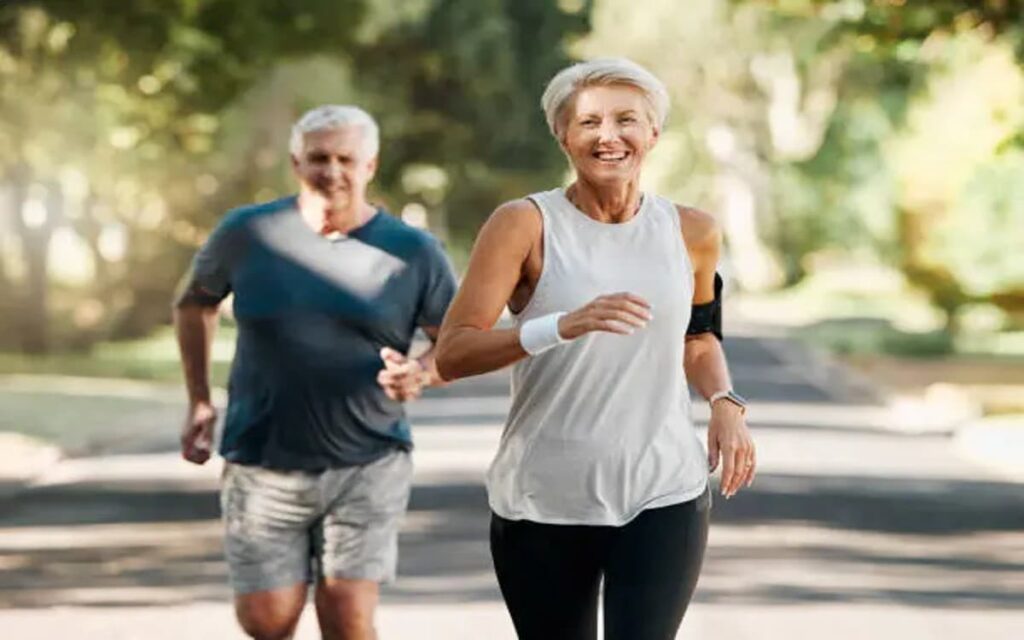
The Time-Efficiency Factor
In our fast-paced world, time is a precious commodity. The idea of achieving significant health benefits in less than 10 minutes a day might seem too good to be true.
However, as we’ll explore in this section, the time efficiency of short workouts is a game-changer for those with busy schedules.
A. Balancing Busy Lifestyles with Short Workouts
Short workouts offer a practical solution for individuals juggling demanding careers, family responsibilities, and social commitments.
Unlike lengthy gym sessions that may feel daunting or unattainable, dedicating a few minutes to exercise is manageable for most people. This accessibility encourages consistency, a key factor in reaping the full benefits of physical activity.
Moreover, short workouts can be seamlessly integrated into breaks throughout the day.
Whether it’s a quick session in the morning, a brisk walk during lunch, or a few minutes of bodyweight exercises in the evening, the flexibility of short workouts empowers individuals to prioritize their health without disrupting their routines.
B. Incorporating HIIT into Daily Routines
Incorporating High-Intensity Interval Training “HIIT” into your daily routine requires thoughtful planning and a willingness to prioritize your well-being. To maximize the effectiveness of short workouts, consider the following tips:
- Set Clear Goals: Define specific fitness objectives, whether it’s improving cardiovascular health, building strength, or enhancing endurance. Tailor your HIIT routine to align with these goals.
- Optimize Intensity: Focus on high-intensity intervals that challenge your body. This can be achieved through exercises like sprints, jump squats, or intense bodyweight movements.
- Utilize Minimal Equipment: HIIT workouts often require minimal or no equipment. This eliminates barriers to entry, allowing you to exercise anytime, anywhere.
- Mix It Up: Keep your routine dynamic by incorporating a variety of exercises. This not only prevents boredom but also engages different muscle groups for a well-rounded workout.
- Prioritize Recovery: Short workouts can be intense, so be sure to allow your body adequate time for rest and recovery. This ensures you can sustain a consistent routine without risking burnout or injury.
C. Comparing Benefits of Short Workouts vs. Traditional Exercise
While traditional exercise methods certainly have their merits, the efficiency of short workouts cannot be overlooked. Studies have demonstrated that the benefits of HIIT, achieved in a fraction of the time, rival or even surpass those of longer, moderate-intensity workouts.
For instance, a comparative study published in the American Journal of Cardiology found that participants who engaged in HIIT for just 15 minutes, three times a week, experienced similar improvements in cardiovascular health as those who engaged in 45-minute moderate-intensity workouts. This underscores the potency of short, intense exercise sessions in maximizing health benefits.
In the next section, we’ll address common misconceptions and concerns about short workouts, providing reassurance and guidance for those considering this time-efficient approach to fitness.

Tailoring Short Workouts to Your Lifestyle
Customizing short workouts to fit your specific needs and circumstances is crucial for long-term success and enjoyment. In this section, we’ll explore how you can adjust your approach based on factors like age, fitness level, and common barriers to exercise.
A. Customizing Workouts for Different Age Groups
It’s essential to recognize that different age groups have varying fitness needs and considerations. Tailoring short workouts to address these nuances ensures that everyone, regardless of age, can reap the benefits.
- Children and Teens: For youngsters, short workouts should focus on building fundamental movement skills, coordination, and cardiovascular fitness. Activities like jumping jacks, skipping, and age-appropriate bodyweight exercises are excellent choices. Keep sessions engaging and fun to foster a positive attitude towards exercise.
- Adults: Adults, especially those with busy schedules, can benefit significantly from short, intense workouts. Emphasis should be placed on a balanced approach, incorporating cardiovascular, strength, and flexibility exercises. HIIT routines can be customized to suit individual preferences and fitness goals.
- Seniors: Tailoring workouts for seniors requires a focus on mobility, balance, and joint health. Low-impact exercises, gentle stretches, and resistance training with light weights or bands are ideal. Always prioritize safety and consult a healthcare professional for personalized advice.
B. Adapting HIIT to Various Fitness Levels
High-intensity interval training is remarkably adaptable, making it suitable for individuals across a wide spectrum of fitness levels. Whether you’re a beginner or an experienced athlete, here’s how you can tailor HIIT to suit your capabilities:
- Beginners: Start with shorter intervals of high-intensity exercise followed by longer periods of rest. Gradually increase intensity and duration as your fitness improves. Focus on bodyweight exercises and low-impact movements to build a foundation.
- Intermediate: Incorporate a mix of bodyweight exercises and light resistance training. Experiment with more challenging movements and slightly longer intervals of high-intensity effort. Pay attention to form and proper technique.
- Advanced: Advanced individuals can push the boundaries of intensity and complexity. Incorporate equipment like dumbbells, kettlebells, or resistance bands for added resistance. Consider complex movements that engage multiple muscle groups simultaneously.
C. Overcoming Common Barriers to Exercise
Short workouts can be a game-changer for those facing common barriers to exercise. Here’s how to address some of the most prevalent challenges:
- Time Constraints: Prioritize efficiency by choosing short, intense workouts. Even a few minutes of high-intensity exercise can yield substantial benefits.
- Lack of Motivation: Find activities you enjoy and set achievable goals. Joining a group or using fitness apps for guidance and tracking can provide motivation and accountability.
- Physical Limitations: Modify exercises to suit your abilities. Seek professional advice for safe and effective alternatives, and focus on activities that promote mobility and strength.
- Inconsistent Routine: Incorporate short workouts into daily habits. Set specific times or reminders to establish consistency.
In the final section, we’ll summarize the key takeaways and provide actionable steps to help you integrate short workouts into your lifestyle for a longer, healthier life.
Practical Tips and Techniques
Implementing short workouts effectively requires a strategic approach. In this section, we’ll provide actionable tips and techniques to help you make the most of your time-efficient exercise routine.
A. Sample 10-Minute HIIT Workouts
Workout 1: Cardio Blitz
- Warm-up (2 minutes): Jumping jacks or brisk walking
- High-Intensity Interval (30 seconds): Sprinting in place or high knees
- Rest (30 seconds): Light jogging or walking in place
- Repeat High-Intensity and Rest intervals for 5 cycles
- Cool-down (2 minutes): Gentle stretching and deep breathing
Workout 2: Full-Body Burn
- Warm-up (2 minutes): Arm circles, leg swings, and torso twists
- High-Intensity Interval (40 seconds): Push-ups or modified push-ups
- Rest (20 seconds): Plank or modified plank position
- High-Intensity Interval (40 seconds): Bodyweight squats
- Rest (20 seconds): Standing or seated leg raises
- Repeat both High-Intensity and Rest intervals for 2 cycles
B. Utilizing Minimal Equipment or Bodyweight Exercises
Short workouts can be highly effective with minimal or no equipment. Incorporate the following bodyweight exercises for a well-rounded routine:
- Push-Ups: Targeting the chest, shoulders, and triceps.
- Squats: Engaging the lower body, including the quads, hamstrings, and glutes.
- Planks: Strengthening the core, shoulders, and back muscles.
- Lunges: Working the legs while also improving balance and stability.
- Burpees: A full-body exercise combining push-ups, squats, and jumps for a high-intensity workout.
If you have access to basic equipment like resistance bands or dumbbells, you can incorporate exercises like bicep curls, tricep dips, and resistance band rows for added variety and challenge.
C. Maximizing Results with Proper Form and Technique
Maintaining proper form and technique is crucial for the effectiveness and safety of short workouts. Here are some key pointers to keep in mind:
- Focus on Quality over Quantity: Prioritize precise movements over speed. Proper form ensures you target the right muscle groups and prevent injury.
- Engage Your Core: Whether you’re doing squats, planks, or any other exercise, engaging your core stabilizes your body and enhances the effectiveness of the movement.
- Breathe Mindfully: Pay attention to your breath, especially during high-intensity intervals. Controlled breathing helps optimize oxygen flow to muscles.
- Listen to Your Body: If an exercise feels uncomfortable or painful, adjust your form or choose a modification. It’s important to avoid pushing yourself to the point of strain or injury.
- Seek Guidance: If you’re new to exercise or have specific health concerns, consider consulting a fitness professional for personalized advice on form and technique.
Incorporating these tips into your short workout routine will not only maximize the benefits but also promote a safe and enjoyable exercise experience. In the concluding section, we’ll recap the key insights and encourage you to embark on this journey toward a longer, healthier life through the power of short workouts.
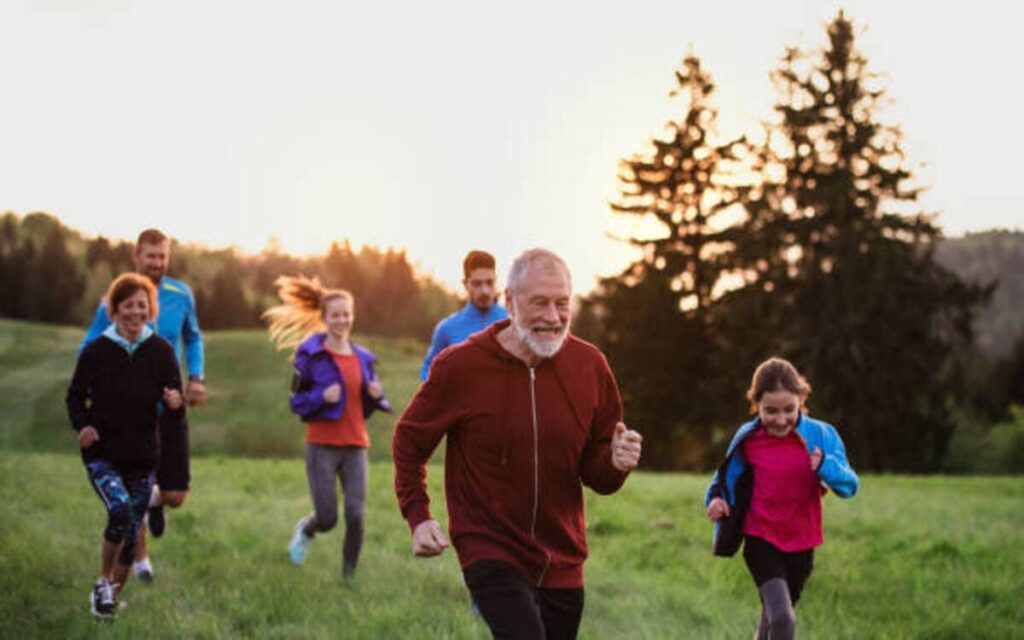
Tracking Progress and Staying Motivated
Maintaining consistency and monitoring your progress are essential components of a successful short workout regimen. In this section, we’ll explore strategies to set achievable goals, leverage technology, and find support to keep you motivated on your journey toward a longer, healthier life.
A. Setting Realistic Goals for Longevity and Fitness
Establishing clear and achievable goals is a critical first step in any fitness endeavor. Here’s how to set realistic objectives for both longevity and fitness:
- Longevity Goals: Consider factors like improving cardiovascular health, reducing the risk of chronic diseases, and enhancing overall well-being. Set specific targets, such as lowering resting heart rate or achieving a certain level of cardiovascular fitness.
- Fitness Goals: Define what you want to achieve in terms of strength, endurance, flexibility, and body composition. Whether it’s being able to do a certain number of push-ups or running a specific distance, make your goals measurable.
- Timeline: Be realistic about the time it will take to achieve your goals. Short workouts can yield impressive results, but consistency over time is key.
- Progressive Adjustments: As you meet your initial goals, progressively challenge yourself by setting new targets. This ensures continued growth and improvement.
B. Utilizing Fitness Apps and Wearables
Technology can be a powerful tool for tracking progress and staying motivated. Consider integrating the following tools into your routine:
- Fitness Apps: Apps like MyFitnessPal, Nike Training Club, and Strava allow you to set goals, track workouts, and monitor your progress over time. They often come with features for personalized workout plans and nutrition guidance.
- Wearable Devices: Devices like fitness trackers and smartwatches provide real-time data on metrics like heart rate, steps taken, and calories burned. They offer valuable insights into your activity levels and help you stay accountable.
- Nutrition Apps: A balanced diet complements your exercise routine. Apps like MyPlate by Livestrong and Lose It! can help you monitor your nutritional intake and make informed choices.
C. Finding Accountability Partners or Communities
Having a support system can make a significant difference in maintaining motivation and consistency. Consider the following strategies:
- Accountability Partners: Team up with a friend, family member, or colleague who shares similar fitness goals. Knowing that someone is counting on you can provide added motivation to stick to your workout routine.
- Online Communities: Joining online forums, social media groups or fitness apps communities can create a sense of camaraderie and accountability. Share your progress, ask for advice, and celebrate achievements with like-minded individuals.
- Group Classes or Workshops: Participating in group fitness classes or workshops provides a structured environment and a sense of community. The collective energy can be highly motivating.
Remember, progress is a journey, not a destination. Celebrate your achievements, no matter how small, and stay committed to your long-term goals for both longevity and fitness. By tracking your progress and staying motivated, you’re setting yourself up for a healthier, more fulfilling life.
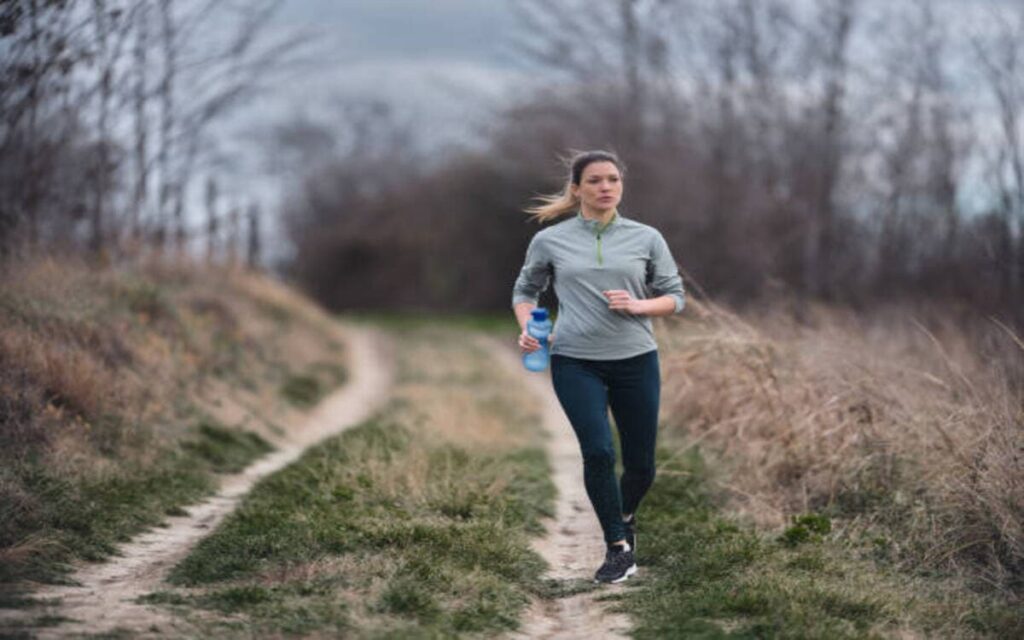
Integrating Short Workouts into Your Routine
Making short workouts a seamless part of your daily life is key to reaping the full benefits. In this section, we’ll explore strategies for incorporating these time-efficient exercises into different parts of your day.
A. Morning vs. Evening Workouts: What Works Best?
The timing of your workout largely depends on personal preference, lifestyle, and individual energy levels. Here are considerations for morning and evening workouts:
Morning Workouts:
- Boosts Metabolism: Morning exercise jumpstarts your metabolism, helping you burn calories throughout the day.
- Enhances Mood and Alertness: Physical activity releases endorphins, promoting a positive mood and increased alertness for a productive day.
- Sets a Positive Tone: Starting your day with a workout sets a healthy tone and can lead to better lifestyle choices throughout the day.
- Consistency: Morning workouts may be more consistent as they are less likely to be affected by schedule changes or unexpected events.
Evening Workouts:
- Stress Relief: After a busy day, exercise can serve as a powerful stress reliever, helping you unwind and relax.
- Physical Performance: Body temperature and muscle function tend to peak in the evening, potentially leading to improved performance.
- Social Interaction: Evening workouts can be a great opportunity for social interaction, whether through group classes or exercising with friends.
- Flexibility: Evening workouts offer more flexibility for those with morning commitments or responsibilities.
Ultimately, the best time for your workout is the time that aligns with your lifestyle and allows you to be consistent.
B. Incorporating HIIT into Work Breaks or Commutes
Short workouts can be seamlessly integrated into your workday, even if you have a busy schedule. Consider the following strategies:
Work Breaks:
- Micro-Bursts of Activity: Use short breaks to perform quick, high-intensity exercises like jumping jacks, squats, or lunges.
- Stair Climbing: If possible, take a few minutes to climb stairs for an effective lower body workout.
- Desk Exercises: Engage in discreet exercises like seated leg lifts, desk push-ups, or torso twists to keep your body active.
Commutes:
- Active Commuting: If feasible, consider walking, cycling, or using public transport that involves some walking. It’s a great way to incorporate physical activity into your daily routine.
- Interval Training: If you have a longer commute, consider incorporating short bursts of high-intensity exercise, such as sprints or intervals of brisk walking.
C. Creating a Consistent Schedule for Lasting Impact
Consistency is the cornerstone of any successful fitness routine. Here are tips to help you establish a sustainable workout schedule:
- Set Realistic Goals: Align your workout schedule with your goals, considering factors like frequency, intensity, and duration.
- Prioritize Time Management: Allocate dedicated time slots for exercise in your calendar, treating them as non-negotiable appointments.
- Gradual Progression: Start with a manageable frequency and gradually increase it as your fitness levels improve. This prevents burnout and reduces the risk of injury.
- Adaptability: Be flexible in adjusting your schedule to accommodate unforeseen circumstances, while ensuring you maintain regular exercise.
By integrating short workouts into your routine in a way that aligns with your lifestyle, you’ll be well on your way to experiencing the remarkable benefits of these time-efficient exercises. Remember, consistency is key to long-term success.

Complementing Short Workouts with a Balanced Lifestyle
Achieving optimal health and longevity involves more than just exercise. In this section, we’ll explore essential elements to complement your short workout routine for a well-rounded, balanced lifestyle.
A. Nutrition and Hydration Tips for Longevity
Maintaining a balanced diet and staying properly hydrated are fundamental for supporting your fitness journey. Consider the following tips:
- Prioritize Whole Foods: Aim for a diet rich in fruits, vegetables, whole grains, lean proteins, and healthy fats. These provide essential nutrients to fuel your workouts and support overall health.
- Stay Hydrated: Adequate hydration is crucial for optimal bodily functions. Aim to drink enough water throughout the day, especially before, during, and after your workouts.
- Pre- and Post-Workout Nutrition: Consume a balanced meal or snack containing carbohydrates and protein before and after your workouts. This helps replenish glycogen stores and aids in muscle recovery.
- Limit Processed Foods and Sugars: Minimize your intake of processed foods, sugary beverages, and excessive amounts of added sugars. These can contribute to inflammation and hinder your fitness progress.
B. Ensuring Adequate Rest and Recovery
Rest and recovery are integral parts of any fitness regimen. They allow your body to repair and grow stronger. Here’s how to prioritize rest:
- Get Quality Sleep: Aim for 7-9 hours of restful sleep per night. Quality sleep supports muscle recovery, cognitive function, and overall well-being.
- Listen to Your Body: Pay attention to signs of fatigue or overexertion. It’s important to allow your body the time it needs to recover between workouts.
- Incorporate Active Recovery: On rest days, engage in light activities like stretching, yoga, or leisurely walks. This promotes blood flow, flexibility, and aids in recovery.
- Consider Massage or Foam Rolling: These techniques can help release tension in muscles, improve circulation, and enhance overall recovery.
C. Balancing Exercise with Stress Management Techniques
Managing stress is crucial for maintaining overall health and longevity. Here are effective techniques to incorporate into your routine:
- Practice Mindfulness and Meditation: These techniques can help calm the mind, reduce stress, and improve mental clarity. Even short sessions can have a profound impact.
- Engage in Relaxation Techniques: Deep breathing exercises, progressive muscle relaxation, and guided imagery can help alleviate stress and promote relaxation.
- Prioritize Leisure Activities: Engage in activities you enjoy, whether it’s reading, spending time in nature, or pursuing a hobby. These moments of leisure can provide a mental break and reduce stress.
- Stay Connected: Foster relationships with friends and family. Social support is a powerful tool in managing stress and promoting overall well-being.
Overcoming Common Misconceptions and Concerns
Understanding and addressing misconceptions and concerns surrounding short workouts is crucial for success and safety. In the following section, we’ll debunk myths and provide guidelines for a safe and effective fitness journey.
Inspiring Success Stories
In this section, we’ll draw inspiration from real-life accounts of individuals who have witnessed remarkable benefits from incorporating short workouts into their lives.
A. Personal Testimonials of Individuals Who Experienced Longevity Benefits
Meet John, a middle-aged professional with a demanding job and a busy family life. Faced with time constraints, he turned to short, intense workouts.
In just a few months, John experienced significant improvements in his cardiovascular health, shedding excess weight and reducing his risk of heart disease. His newfound energy and vitality have transformed his outlook on life.
B. Showcasing Notable Figures Who Advocate Short Workouts
Prominent figures across various industries have embraced the power of short workouts.
Take Mark Zuckerberg, the CEO of Facebook, for instance. Despite his demanding schedule, he allocates time for daily exercise, often opting for high-intensity sessions.
His advocacy for short workouts underscores their accessibility and effectiveness, even for those with busy lifestyles.
C. Highlighting Positive Changes in Overall Quality of Life
Sarah, a retiree in her 60s, was initially skeptical about the impact of short workouts. However, after integrating HIIT into her routine, she experienced a newfound sense of strength and mobility.
This positive shift in physical health translated into improved mental well-being, boosting her confidence and overall quality of life. Short workouts have allowed Sarah to enjoy her golden years to the fullest.
Conclusion on 10 Minutes of Daily Exercise Can Extend Your Life
As we conclude this exploration into the transformative potential of less than 10 minutes of exercise, let’s recap the key takeaways:
- Short workouts, particularly High-Intensity Interval Training (HIIT), offer a time-efficient approach to achieving significant health benefits.
- The benefits of short workouts extend to improved cardiovascular health, enhanced metabolic function, and reduced stress levels.
- Customizing short workouts to individual needs, age groups, and fitness levels ensures inclusivity and effectiveness.
- Integrating short workouts into daily routines, whether in the morning, during breaks, or in the evening, is key to consistency.
Now, it’s your turn. Start incorporating short workouts today, and witness the remarkable impact on your health and longevity.
Remember, it’s not about the duration of exercise, but the intensity and consistency that hold the key to a longer, healthier life.
Embrace the transformative potential of less than 10 minutes of exercise and embark on your journey towards optimal well-being.

